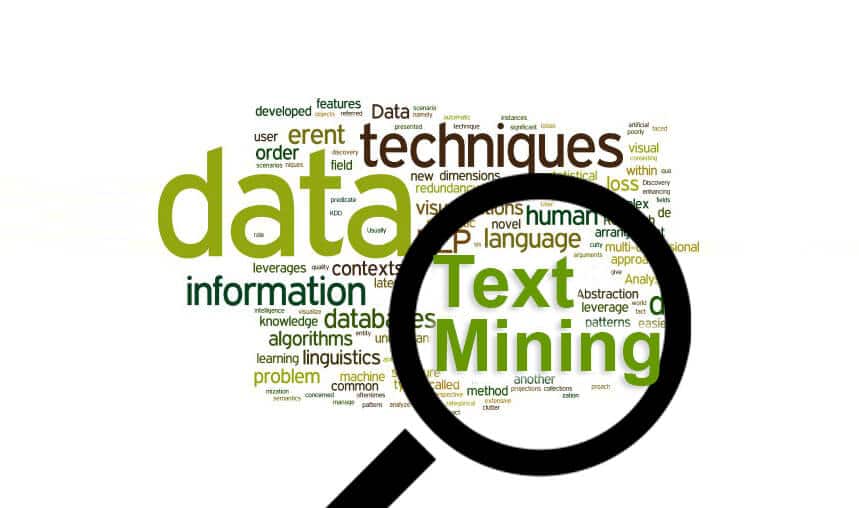Text Mining: Extracting Unfound Intelligence in Its Raw Essence
Text mining is a relatively new term for those outside the realm of the technical sphere. To lay it out in simple layman’s terms, it is precisely a process that finds its parallel in text analysis. Mining, as is common knowledge, is the act of extraction, and adding text to that, makes it a method of deriving high-quality text from the Web. The information is drawn out of Web databases through a series of trends and patterns. To make it all the more to-the-point, it is a way by which input texts are structured from their unstructured forms through the step-by-step processes of extraction, interpretation, evaluation and insertion. Text mining tasks typically involve a large number of sub-processes, such as text clustering, text categorization, entity extraction, sentiment analysis, granular taxonomy output, data summation, connection modeling, etc.
To finally sum it up for non-technical people, text mining is the discovery of previously unknown data through computer processes from voluminous databanks that keep unstructured texts. Text mining deals with naturally occurring information only that is bona fide new, unlike XML, HTML and other programming languages. Loginworks teams up with some of the industry’s most eminent specialists involving them in all ongoing projects of text mining to deliver the best possible results. Being one of the few companies that have come to the forefront to offer services oriented on this new technique, Loginworks has achieved several landmarks through its frankly fast-moving and inerrant services.
Text mining is different from processes with semantically similar names such as, data mining, web mining and information retrieval (IR). Text mining targets natural language texts instead of databases to pull out patterns. The inputs text is always unstructured and the web sources are not. As for Information access, text mining differs largely from it because the former does not involve new information and the fragments of information concerned here are simply put together to develop a sense.
Text Mining: Its Common Applications
Text mining has practical applications in many dimensions. Take a look here.
- Dissecting Survey Findings: Often survey campaigns use open-ended questions in order to gather personal opinions and points of view of the respondents. The point of framing such question is to initiate expression of ideas that might not fully be in favor of the concerned topic. Such rare information can be extracted through text mining for analysis.
- Transmission of Text Messages: Classification of Internet-borne text messages is an important function for both single and business users. Tons of legitimate and junk mails find their way into inboxes of users every day. Instead of activating a filter with a few clichéd terms to filter junk from important mails, the identification process can be conducted through text mining. The process is also very helpful in routing mails to their right destinations. For customer care centers, the process can course petition mails into one inbox, while routing the suggestion mails into another. Finally, it reverts back the unwanted electronic mails to their senders.
- Archiving of Insurance Claims, Warranty Recovery, Medical Records, etc.: Open ended information in textual forms is best stored electronically for easy extraction. For instance, the symptoms of a patient, the problems with a vehicle, the warranty usage, insurance claim, etc. are invaluable information that can be promptly exploited through text mining from different text sources.
- Competition Scaling through Investigation of Rival Sites: A great way of gathering business intelligence is mining texts by crawling on the competitor websites. This can be done to spot all links and keywords found on the website. Those findings can help investigators land with clues and reach a conclusion about what’s yielding results for the competitor sites.
Loginworks exploits the technology to its advantage by bringing to the users a host of services that facilitate operations in different business domains.
The Basic Approaches
Technically, text mining involves changing the information concerned into their numeric values. To be more precise, all the input information are indexed and enumerated in order to compute a document with a chart layout of words.
- Data Mining through Well-Tested Techniques: The data, when sourced from a matrix is analyzed in order to find certain words and phrases important, or as much as relevant to the investigation through processes as factoring, clustering, etc.
- Document Research: Another search technique of text mining is search by keywords or phrases that have powered the whole of the Internet. Numerous domains use this system in the Web front to source materials suitable to the keywords used for the search. This process of text mining is vital to scour huge repositories of information to spot a fraction of it.
- Black-Box: This, in other words, is known as concept extraction. It is a manner by which deeper meaning from text banks is derived through a limited manual involvement. The process banks on proprietary algorithms that suck out the meaning from chunks of texts in its real essence for easy understanding.
Loginworks has a separate team of researchers that cultivate latest updates and generic information on web mining algorithm, techniques, and applications. With the knowledge support from the team, and technological backbone, it has managed to maintain its laissez faire image in the trade by its service quality.
- LinkedIn Scraper | LinkedIn Data Extractor Software Tool - February 22, 2021
- Is Web Scraping Legal? - February 15, 2021
- What Is Data Scraping? - February 10, 2021

